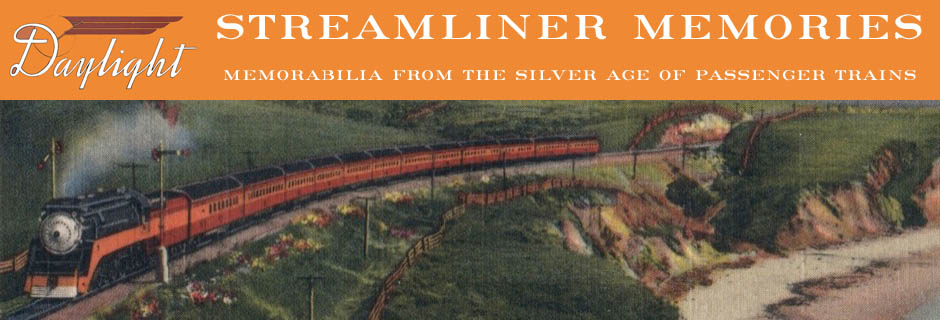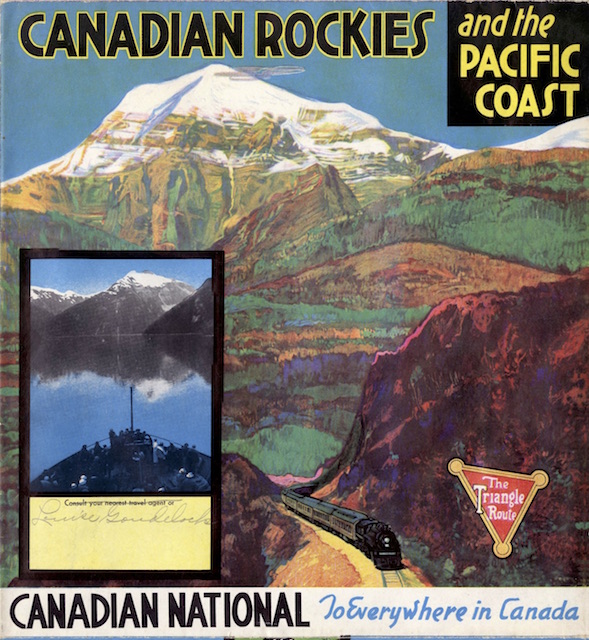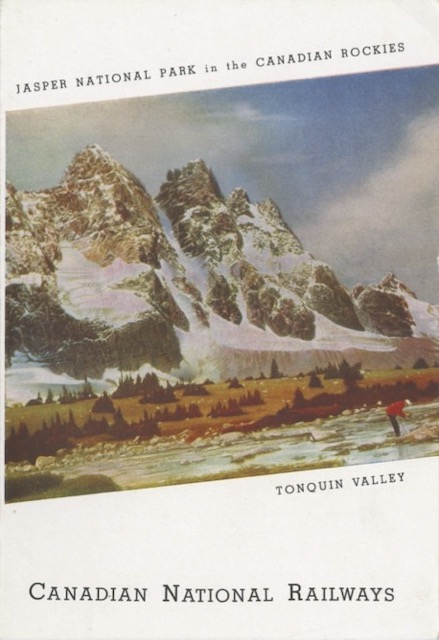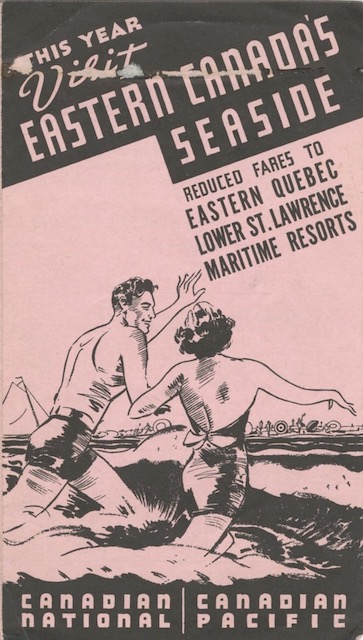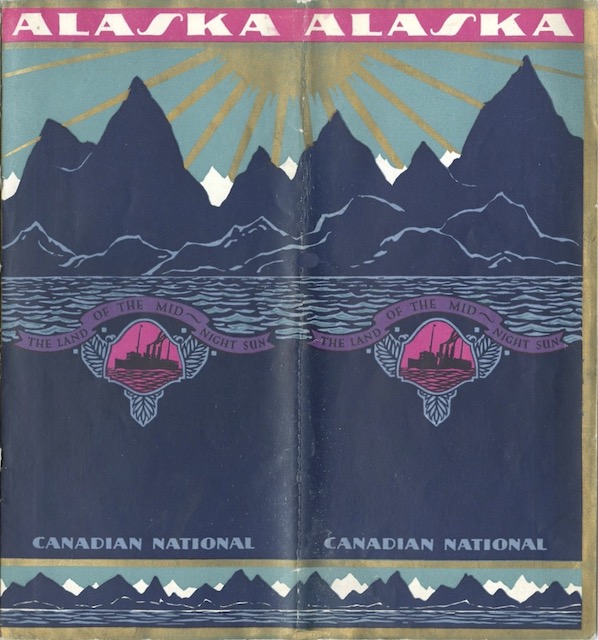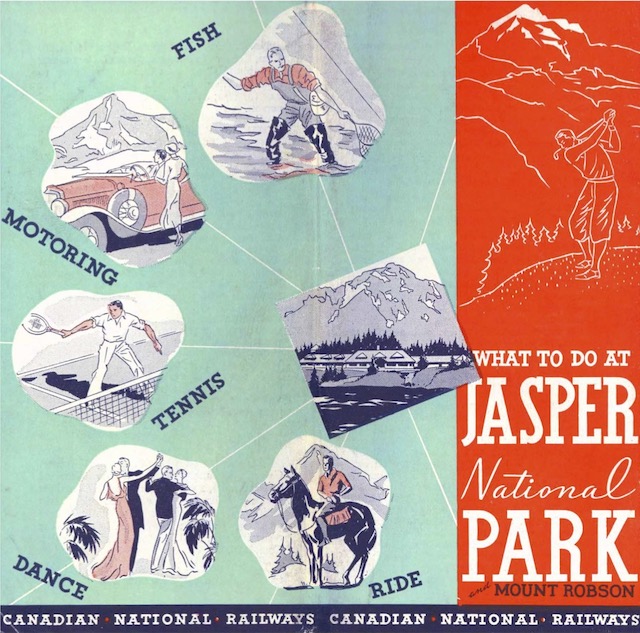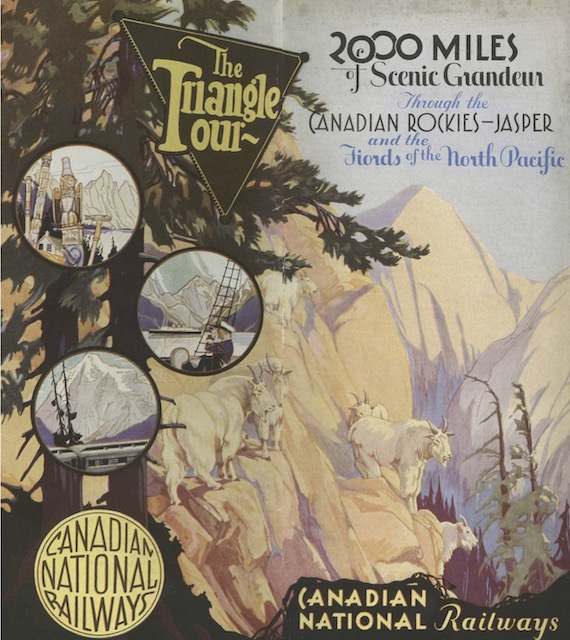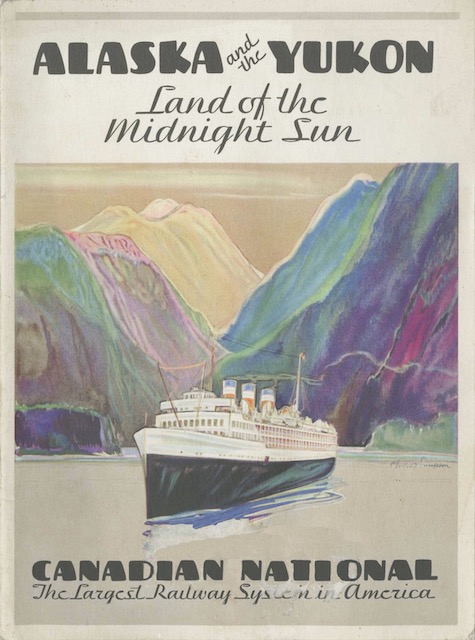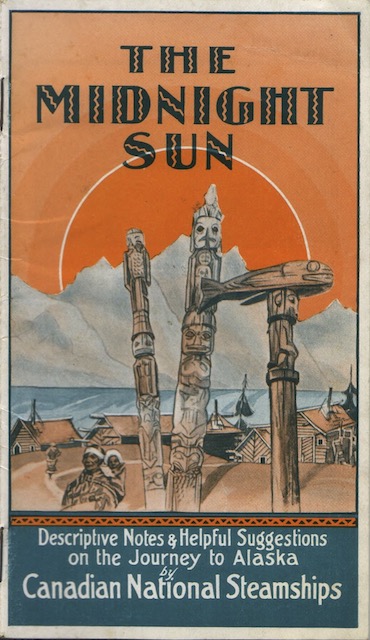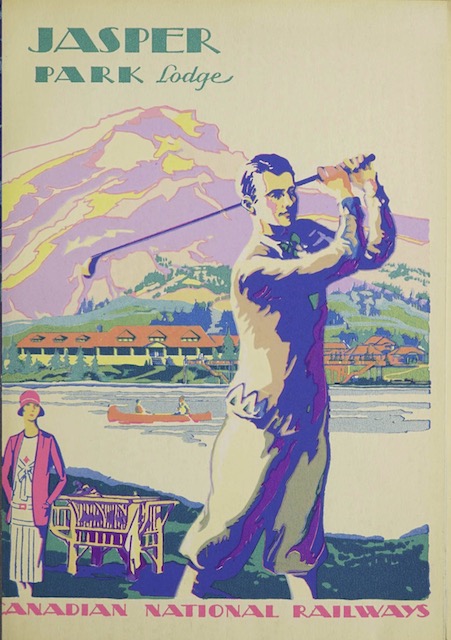Canada declared war on Germany in September, 1939, but that apparently had no immediate affect on Jasper Lodge. CN booklets for 1940 and 1941 don’t mention the war. However, this one, from 1942, has a paper glued to the cover noting that “there have been changes in conditions brought about by the war.”
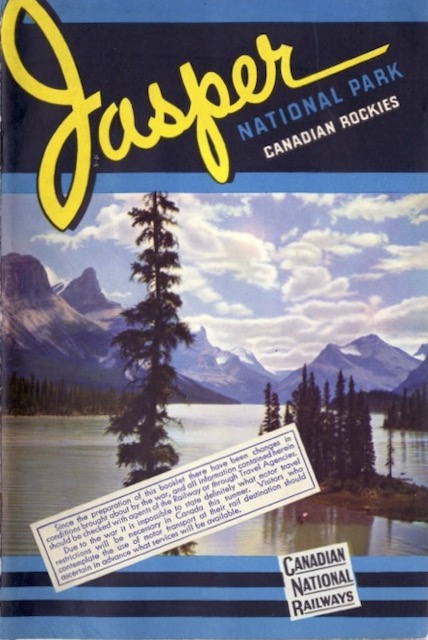 Click image to download an 20.5-MB PDF of this 54-page booklet.
Click image to download an 20.5-MB PDF of this 54-page booklet.
Inside, another small paper glued onto page 1 says, “Opening and closing dates of Jasper Park Lodge are revised to JUNE 15 – AUGUST 31” (instead of June 15-September 15). Further, the “Golf Tournament (Sept. 6-12) will not be held. Sightseeing drives and other motor services, including motor coach service over the Columbia Icefield Highway, also All-Expense Tours listed on pages 41-46 will NOT be operated.” Continue reading
